Implementing The Cycle Of Success: A Case Study IELTS Reading Answers
5 min read
Updated On
-
Copy link
Table of Contents

Limited-Time Offer : Access a FREE 10-Day IELTS Study Plan!
The Academic passage ‘Implementing The Cycle Of Success: A Case Study ‘ is a reading passage that appeared in an IELTS Test. Try to find the answers to get an idea of the difficulty level of the passages in the actual reading test. If you want more passages to solve, try taking one of our IELTS reading practice tests.
Implementing The Cycle Of Success: A Case Study
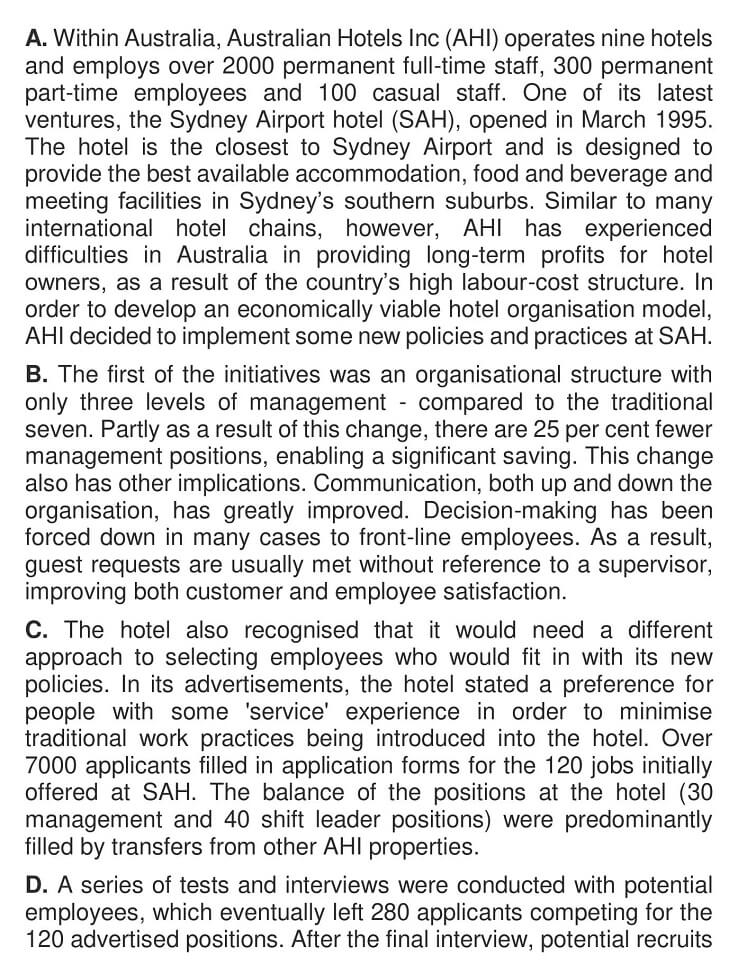
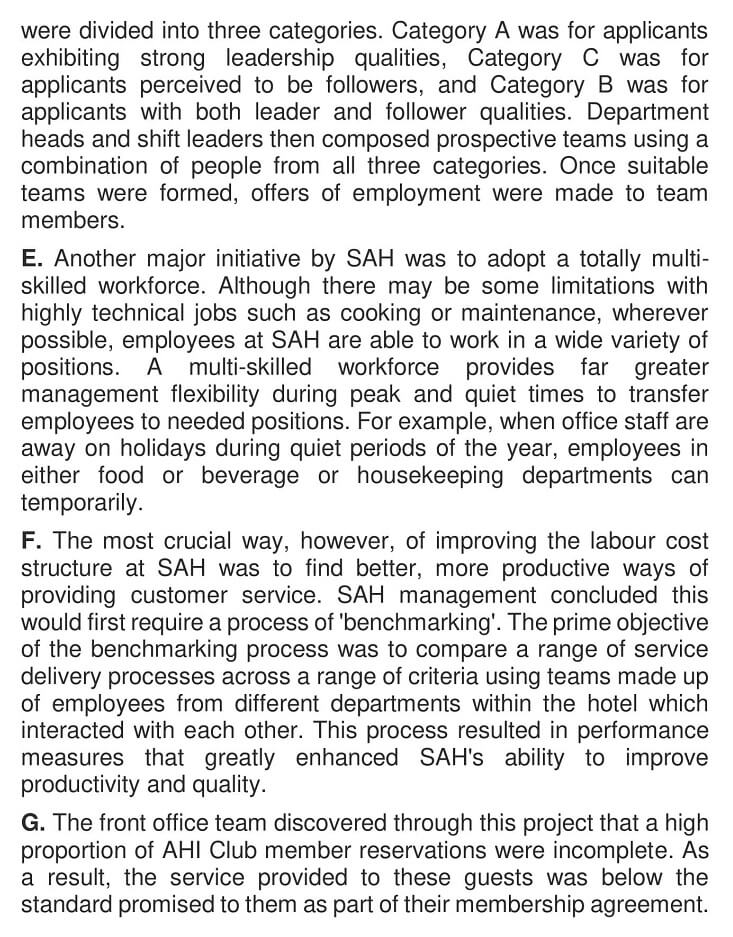

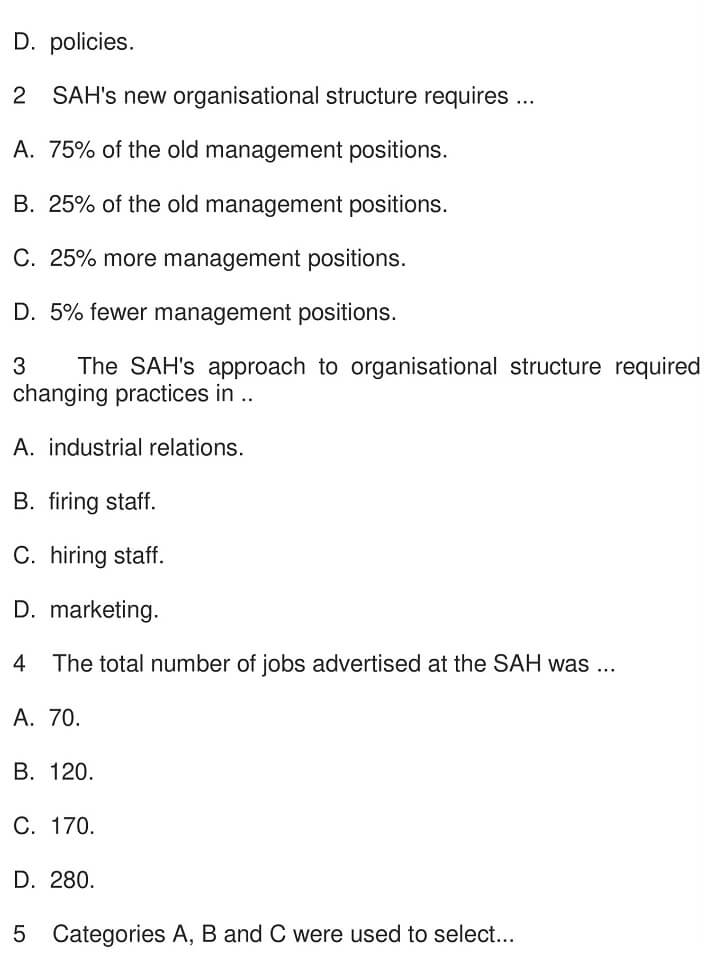
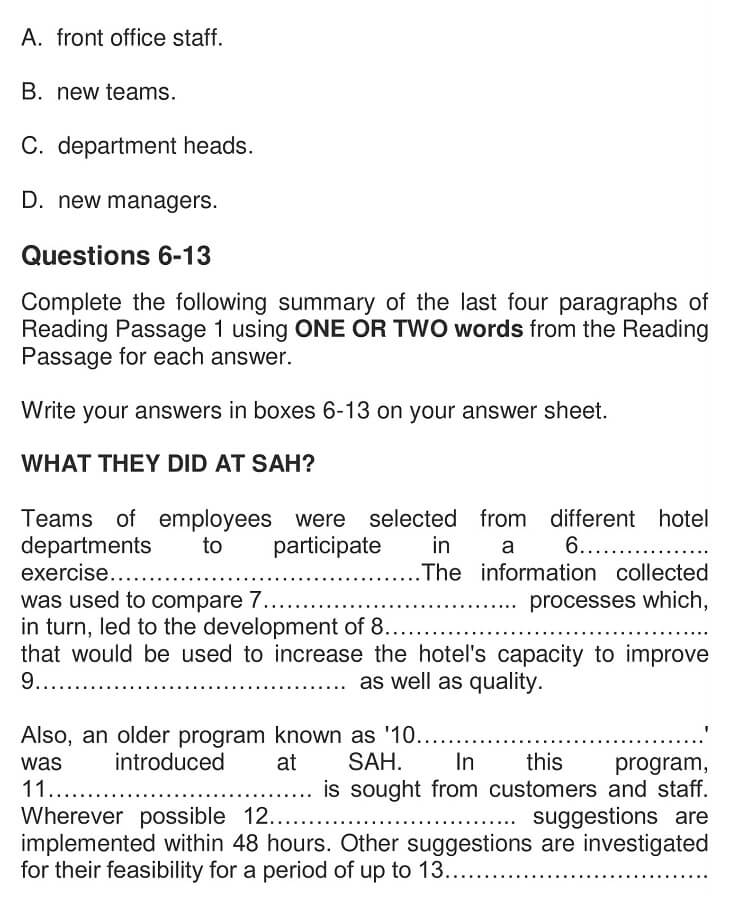
Answers
Unlock All Answers
| Question number | Answer | Explanation |
|---|---|---|
| 1 | C | In paragraph A, it is mentioned that within Australia, Australian Hotels Inc (AHI) operates nine hotels and employs over ‘2000 permanent full-time staff, 300 permanent part-time employees and 100 casual staff’. AHI has experienced difficulties in Australia in providing long-term profits for hotel owners, as a result of the ‘country’s high labour-cost structure’ (high cost of running the hotel is related to their staff). Hence, the answer is C (staff). |
| 2 | A | Paragraph B informs that in order to develop an ‘economically viable hotel organisation model, ‘AHI decided to implement some new policies and practices at SAH’. The first of the initiatives was an organisational structure with only three levels of management – compared to the traditional seven. Partly as a result of this change, there are ‘25 percent fewer management positions’ (remaining 75% will be old positions), enabling a significant saving. Hence, the answer is A (75% of the old management positions). |
| 3 | C | Paragraph C states that the ‘hotel’ (Sydney Airport hotel (SAH)) also recognised that it would ‘need a different approach’ to ‘selecting employees who would fit in with its new policies’ (hiring new staff to fit in the changing organizational structure). Hence, the answer is C (hiring staff). |
| 4 | B | Paragraph C points out that ‘in its advertisements, the hotel’ stated a preference for people with some ‘service’ experience in order to minimize traditional work practices being introduced into the hotel. Over 7000 applicants filled in application forms for ‘the 120 jobs initially offered at SAH’. Hence, the answer is B (120). |
| 5 | B | Paragraph D suggests that after the final interview, ‘potential recruits’ were ‘divided into three categories’. ‘Category A’ was for ‘applicants exhibiting strong leadership qualities’ (leaders or managers), ‘Category C’ was for applicants perceived to be ‘followers’ (members), and ‘Category B’ was for ‘applicants with both leader and follower qualities’. Department heads and shift leaders then ‘composed prospective teams’ using a combination of people from all three categories. Once ‘suitable teams were formed’ (new teams), offers of employment were made to team members. Hence, the answer is B (new teams). |
| 6 | Benchmarking | In paragraph F, the writer writes that the most crucial way of improving the labour cost structure at SAH was to find better, more productive ways of providing customer service. ‘SAH management’ concluded this would first ‘require a process of ‘benchmarking’’. The prime objective of the benchmarking process was to compare a range of service delivery processes across a range of criteria using ‘teams made up of employees from different departments within the hotel’ which interacted with each other. Hence, the answer is ‘benchmarking’. |
| 7 | Service delivery | Paragraph F points out that the prime objective
of the ‘benchmarking process’ was to ‘compare a range of service delivery processes’ across a ‘range of criteria using teams made up of employees from different departments within the hotel. Hence, the answer is ‘service delivery’. |
| 8 | Performance measures | Paragraph F discusses that ‘the benchmarking process’ ‘resulted in performance measures’ that greatly enhanced SAH’s ability to improve productivity and quality. Hence, the answer is ‘performance measures’. |
| 9 | productivity | Paragraph F brings out the fact that ‘the benchmarking process’ resulted in performance
measures that ‘greatly enhanced SAH’s ability’ to ‘improve productivity and quality’. Hence, the answer is ‘productivity’. |
| 10 | Take charge | Paragraph H speaks about a program modelled on an ‘earlier project’ (older program) called ‘Take Charge’ was ‘implemented’. Hence, the answer is ‘take charge’. |
| 11 | feedback | Paragraph H mentions that ‘Take Charge’
provides an ‘effective feedback’ loop ‘from both customers and employees’. Hence, the answer is ‘feedback’. |
| 12 | employee | Paragraph I states that ‘employee feedback’ is reviewed daily and ‘suggestions are implemented within 48 hours’, if possible, or a valid reason is given for non-implementation. Hence, the answer is ‘employee’. |
| 13 | 30 days | Paragraph I observe that when ‘suggestions require analysis or data collection’ (investigated for their feasibility), the ‘Take Charge team’ has ‘30 days’ in which to address the issue and come up with recommendations. Hence, the answer is ‘30 days’. |
Check More IELTS Reading Answers
Also check :
Practice IELTS Reading based on question types

Start Preparing for IELTS: Get Your 10-Day Study Plan Today!
Recent Articles

Nehasri Ravishenbagam

Haniya Yashfeen

Haniya Yashfeen

Haniya Yashfeen
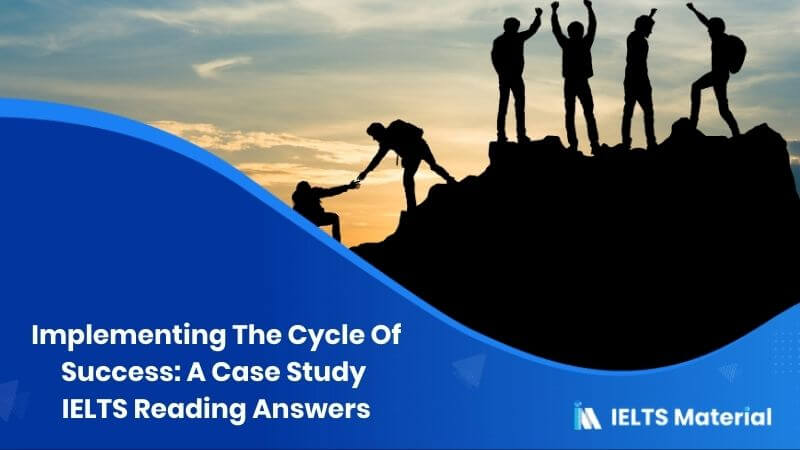



Post your Comments